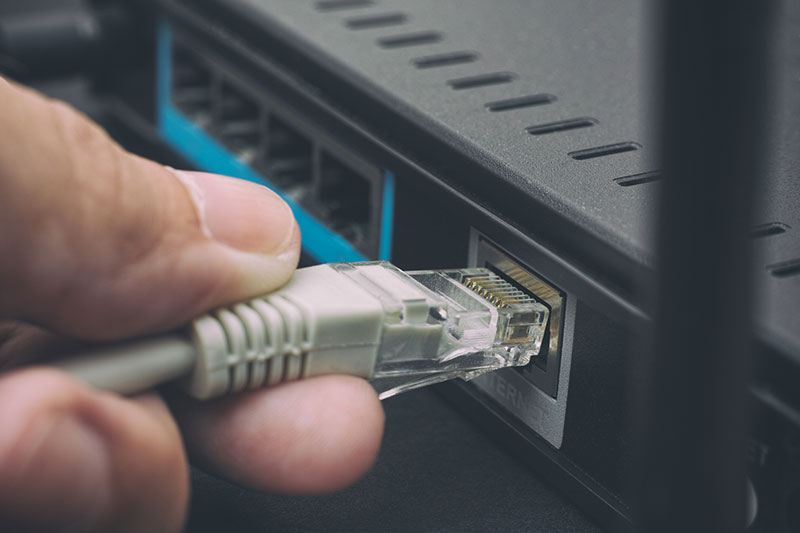What’s the difference between FTTC and FTTP fibre optic broadband?

Just as you’ve upgraded to the superfast speeds of fibre optic broadband, and gotten your head around why it’s different from ADSL or standard broadband, here comes the government pledging billions of pounds of public money to roll out full fibre internet to all homes by 2033.
But what’s full fibre, also known as FTTP, and how is it different from the fibre optic connection you already have? And if full fibre broadband is so dazzling, where can you sign up?
Cabinet versus Premise
The difference between your home fibre optic connection and the ones currently enjoyed by a lucky few Britons, comes down to, in industry parlance, the ‘last mile’ of wiring (although it’s more like the last 100m to 1km). After travelling from a local telephone exchange to your street cabinet on fibre optic cables, these connections make the jump from your street cabinet to your home router on copper phone wires, the type used in standard broadband connection and to make landline calls (as if anyone ever does that).
This type of connection is called fibre to the cabinet, or FTTC, because that’s as far as the fibre optic cabling runs. It’s cheaper and easier to install than full-fibre connections, as engineers don’t have to run fibre optic cables to every single house on the street; they simply recruit the existing copper phone wires that were installed more than 100 years ago for the task. They just need to install fibre cables to street cabinets, which serve between 20 and 100 people, and upgrade the cabinet. Consequently, FTTC broadband is available to more than 95% of UK addresses.
But the move from fibre to copper entails a slowdown of speed, because that network was designed originally for the raging phone conversations of the 1920s. Digital data travels slower along copper phone wires than fibre optic cables. FTTC comes in three theoretical maximum download speeds—80 Mbps, 55 Mbps, and 40 Mbps—although the ‘average speeds’ advertised by broadband providers are around 67 Mbps, 50 Mbps, and 36 Mbps. So why aren’t you getting the maximum theoretical speed for the infrastructure with FTTC?
That’s because on copper wires broadband signals suffer attenuation, or loss of speed over distance, meaning the further you live from your street cabinet, the slower your connection will be, even if you’re sprung for fibre. Furthermore, copper wires deliver asymmetrical connections, meaning data travels faster downstream than upstream, leading to the large disparity in download and upload speeds you see even with the faster FTTC connections. Speeds can also be limited by contention, or traffic on the infrastructure, as you and your neighbours all try to stream the big game, and by crosstalk between the copper wires when they converge at the street cabinet.
In contrast, full fibre, or fibre to the premise (FTTP) connections travel the entire distance from the phone exchange to your home on fibre optic cables, meaning it can deliver speeds of up to 1 Gbps (or 1,000 Mbps), 20 times the current UK average. At that speed, you could download the entire English language Wikipedia, compressed, in 2 minutes. Or, for less edifying pursuits, an entire Blu-Ray film in 3 minutes and 3 seconds. Connections don’t suffer attenuation and download speeds and upload speeds are symmetrical. Additionally, full fibre connections will be necessary to deliver 5G, the currently mostly theoretical fifth generation mobile network, which will deliver speeds of between 1 Gbps and 10 Gbps.
Can I Get FTTP Broadband?
Unfortunately, FTTP connections are currently available to just 5% of UK addresses. We’re significantly lagging behind our European peers in the rollout of full fibre: 89% of homes in Portugal and 71% in Spain can access FTTP.
When you compare broadband tariffs, entering your postcode, download speeds exceeding 100Mbps that aren’t from Virgin Media indicate FTTP is available in your neighbourhood.
OpenReach, the UK’s internet infrastructure provider, operates a website that will tell you if fibre is available in your area and what flavour, FTTC or FTTP. You simply need to enter your postcode or landline phone number.
If you can’t get FTTP yet, hold on: the rollout is coming. The government this summer announced plans to bring full fibre connections to an additional 15 million premises by 2025 and to make universal full-fibre coverage mandatory by 2033. The government will rely on private investment to deliver most of the technology, at first to city centres and urban areas, but has committed £3 billion to £5 billion of public money to bring full fibre to the last 10% of addresses, those in rural areas to which it would be commercially unviable for private companies to install FTTP.
“We want everyone in the UK to benefit from world-class connectivity no matter where they live, work or travel,” Jeremy Wright, Secretary of State for the Department for Digital, Culture, Media and Sport (DCMS), said of the proposals at the time.
Read on our blog

With the government poised to implement tough new measures to...

Budget broadband provider TalkTalk has been notifying customers via email...

A year-long investigation by charity Citizens Advice has revealed a...

Education Secretary Nadhim Zahawi has announced a new commitment to...
